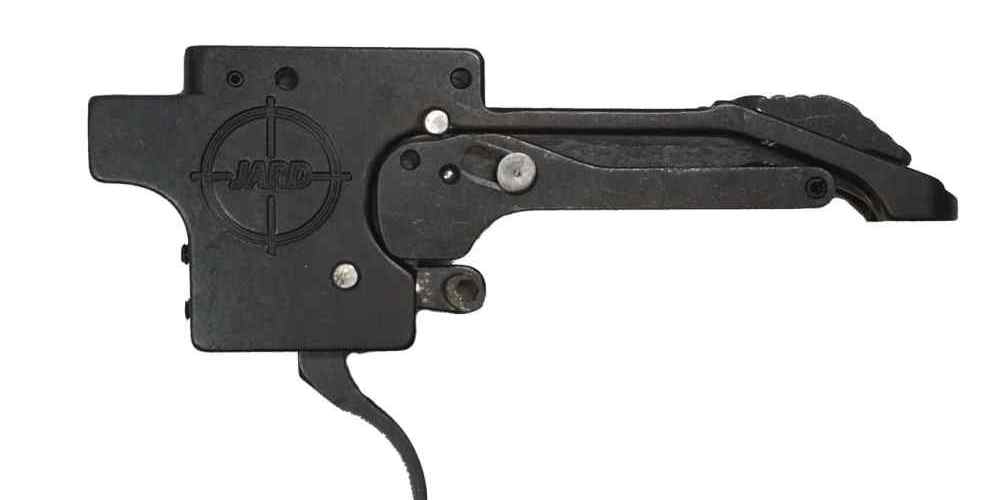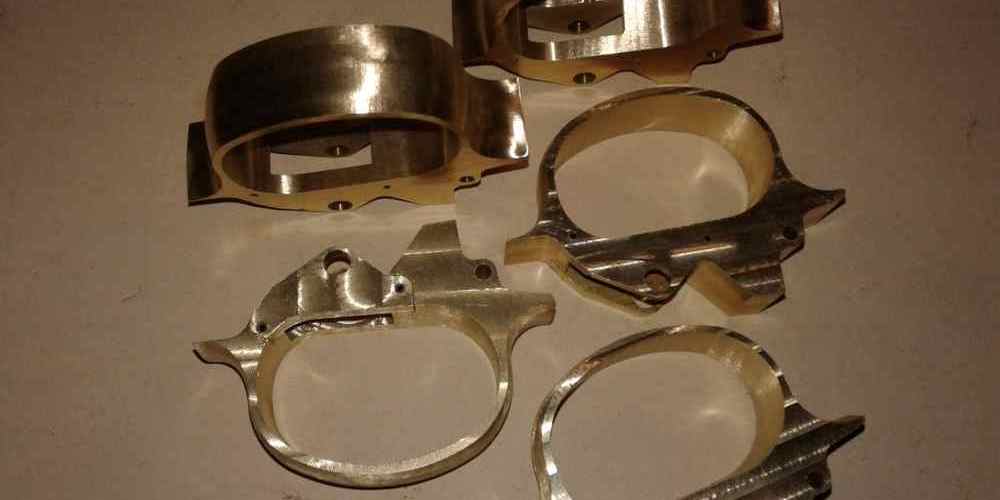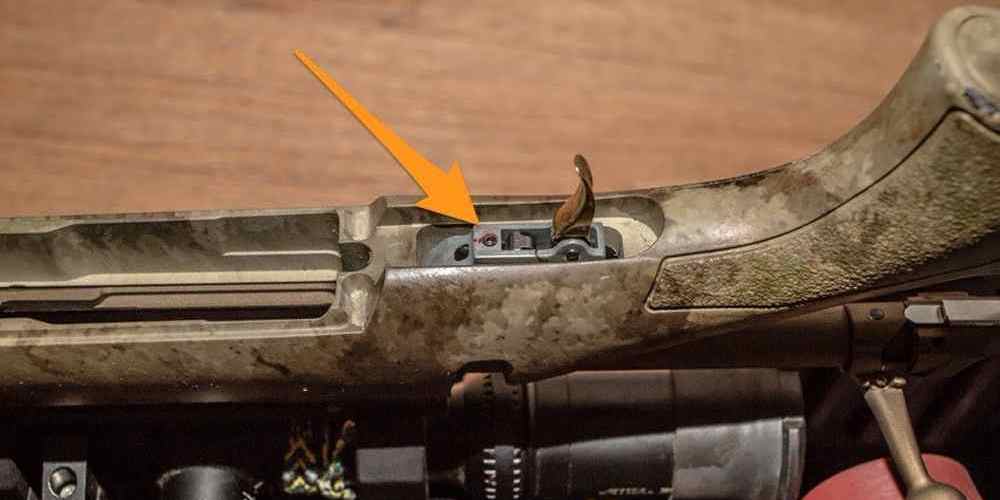Ensuring safety with every pull.
Importance of Trigger Safety Mechanisms in Firearms
Trigger safety mechanisms are a crucial component of firearms that play a vital role in ensuring the safe operation of these weapons. These mechanisms are designed to prevent accidental discharges and help minimize the risk of unintentional firing. In this article, we will take a closer look at the importance of trigger safety mechanisms in firearms and how they work to keep both the user and those around them safe.
One of the key reasons why trigger safety mechanisms are so important is that they help prevent accidental discharges. Accidental discharges can occur when a firearm is mishandled or dropped, leading to potentially dangerous situations. Trigger safety mechanisms are designed to prevent the trigger from being pulled unless intentional pressure is applied, reducing the likelihood of an accidental discharge.
Another important aspect of trigger safety mechanisms is their role in preventing unintentional firing. In high-stress situations, such as in law enforcement or military operations, the risk of unintentional firing can be heightened. Trigger safety mechanisms help to ensure that the firearm will only fire when the user intends for it to do so, reducing the risk of unintended consequences.
One common type of trigger safety mechanism is the trigger safety lever, which is a small lever located on the trigger itself. This lever must be engaged before the trigger can be pulled, adding an extra layer of safety to the firearm. Another type of trigger safety mechanism is the trigger safety blade, which is a small piece of metal that must be depressed before the trigger can be pulled. These mechanisms are designed to be easy to engage while still providing an effective barrier against accidental discharges.
In addition to preventing accidental discharges and unintentional firing, trigger safety mechanisms also help to promote safe handling practices. By requiring intentional pressure to be applied to the trigger before the firearm can be fired, these mechanisms encourage users to be mindful of their actions and to handle the weapon with care. This can help to reduce the risk of negligent discharges and promote a culture of safety among firearm users.
It is important for firearm owners to familiarize themselves with the trigger safety mechanisms on their weapons and to ensure that they are functioning properly. Regular maintenance and inspection of these mechanisms can help to prevent malfunctions and ensure that the firearm remains safe to use. In addition, proper training in firearm safety and handling techniques is essential for all users to minimize the risk of accidents and injuries.
In conclusion, trigger safety mechanisms are a critical component of firearms that help to prevent accidental discharges, unintentional firing, and promote safe handling practices. These mechanisms play a vital role in ensuring the safety of both the user and those around them. By understanding the importance of trigger safety mechanisms and taking the necessary precautions, firearm owners can help to prevent accidents and promote a culture of safety in the use of firearms.
Types of Trigger Safety Mechanisms
When it comes to firearms, safety is paramount. One crucial aspect of firearm safety is the trigger safety mechanism. Trigger safety mechanisms are designed to prevent accidental discharges of a firearm by requiring a deliberate action to be taken before the trigger can be pulled. There are several types of trigger safety mechanisms, each with its own unique features and benefits.

One common type of trigger safety mechanism is the trigger safety lever. This type of safety mechanism is typically found on semi-automatic pistols and requires the shooter to engage a small lever located on the trigger before the trigger can be pulled. This prevents the trigger from being pulled accidentally, such as if the firearm is dropped or bumped.
Another type of trigger safety mechanism is the trigger safety blade. This type of safety mechanism is often found on rifles and shotguns and consists of a small blade that must be depressed before the trigger can be pulled. This design ensures that the trigger cannot be pulled accidentally, even if the firearm is mishandled.
Some firearms feature a trigger safety tab, which is a small tab that must be engaged before the trigger can be pulled. This type of safety mechanism is often found on revolvers and provides an additional layer of safety to prevent accidental discharges.
In addition to these types of trigger safety mechanisms, some firearms feature a trigger safety block. This type of safety mechanism consists of a physical block that prevents the trigger from being pulled until it is manually disengaged. Trigger safety blocks are commonly found on rifles and shotguns and provide a high level of safety by physically preventing the trigger from being pulled.
It is important to note that trigger safety mechanisms are not a substitute for proper firearm handling and safety practices. It is essential for all shooters to receive proper training on how to safely handle and operate firearms to prevent accidents and injuries.
In conclusion, trigger safety mechanisms are an essential component of firearm safety. By requiring a deliberate action to be taken before the trigger can be pulled, trigger safety mechanisms help prevent accidental discharges and ensure the safe operation of firearms. There are several types of trigger safety mechanisms, each with its own unique features and benefits. Whether it is a trigger safety lever, trigger safety blade, trigger safety tab, or trigger safety block, these mechanisms play a crucial role in keeping shooters safe. Remember, proper firearm handling and safety practices are essential for preventing accidents and injuries.
Common Misconceptions about Trigger Safety Mechanisms
When it comes to firearms, safety is paramount. One of the key components of firearm safety is the trigger safety mechanism. However, there are many misconceptions surrounding trigger safety mechanisms that can lead to confusion and potentially dangerous situations. In this article, we will take a closer look at some common misconceptions about trigger safety mechanisms and provide clarity on how they work to keep you safe.
One common misconception about trigger safety mechanisms is that they are unnecessary or ineffective. Some people believe that as long as they handle their firearm with care, they do not need to rely on a trigger safety mechanism to prevent accidental discharges. However, trigger safety mechanisms are an essential feature of modern firearms that provide an additional layer of protection against unintentional firing.
Trigger safety mechanisms are designed to prevent the trigger from being pulled unless intentional pressure is applied. This helps to reduce the risk of accidental discharges caused by bumps, drops, or other external factors. By requiring a deliberate action to engage the trigger, trigger safety mechanisms help to ensure that the firearm is only fired when the user intends to do so.
Another common misconception about trigger safety mechanisms is that they can be easily bypassed or disabled. Some people believe that trigger safety mechanisms are not reliable and can be overridden with minimal effort. However, trigger safety mechanisms are designed to be robust and resistant to tampering.
Most modern firearms are equipped with multiple safety features, including trigger safety mechanisms, to provide a comprehensive level of protection. These safety features are carefully engineered to work together to prevent accidental discharges and ensure the safe operation of the firearm. Attempting to bypass or disable trigger safety mechanisms can compromise the overall safety of the firearm and increase the risk of accidents.
It is important to remember that trigger safety mechanisms are not a substitute for proper firearm handling and storage practices. While trigger safety mechanisms provide an additional layer of protection, they should always be used in conjunction with safe handling practices such as keeping the firearm unloaded when not in use, storing it in a secure location, and following all recommended safety guidelines.
Some people also mistakenly believe that trigger safety mechanisms are only necessary for certain types of firearms. While it is true that some firearms may have additional safety features beyond a trigger safety mechanism, such as a manual safety or a grip safety, trigger safety mechanisms are a standard feature on most modern firearms.
Whether you are using a handgun, rifle, or shotgun, it is important to familiarize yourself with the specific safety features of your firearm and understand how they work together to keep you safe. By understanding the role of trigger safety mechanisms and other safety features, you can ensure that you are handling your firearm responsibly and minimizing the risk of accidents.
In conclusion, trigger safety mechanisms are an essential component of firearm safety that help to prevent accidental discharges and ensure the safe operation of the firearm. By dispelling common misconceptions about trigger safety mechanisms and understanding how they work, you can enhance your knowledge of firearm safety and make informed decisions when handling firearms. Remember to always prioritize safety and follow recommended guidelines for safe firearm handling to protect yourself and others.
How to Properly Maintain and Test Trigger Safety Mechanisms
Trigger safety mechanisms are an essential component of firearms, designed to prevent accidental discharges and ensure the safety of the user and those around them. Proper maintenance and testing of these mechanisms are crucial to ensure they function correctly when needed. In this article, we will take a closer look at trigger safety mechanisms, how they work, and how to properly maintain and test them.
Trigger safety mechanisms come in various forms, but their primary function is to prevent the trigger from being pulled unless intentional pressure is applied. This helps to prevent accidental discharges caused by bumps, drops, or other unintended actions. One common type of trigger safety is the trigger safety lever, which must be engaged before the trigger can be pulled. Another type is the trigger safety blade, which requires a specific amount of pressure to be applied before the trigger can be activated.
Regardless of the type of trigger safety mechanism your firearm has, it is essential to regularly inspect and maintain it to ensure it is functioning correctly. This includes checking for any signs of wear or damage, such as cracks, chips, or rust. If you notice any issues, it is important to address them promptly to prevent malfunctions that could compromise your safety.
In addition to visual inspections, it is also important to test the trigger safety mechanism regularly to ensure it is working as intended. One way to do this is by performing a function check, which involves verifying that the safety engages and disengages properly. To do this, first, ensure the firearm is unloaded and pointed in a safe direction. Then, engage the safety and attempt to pull the trigger. The trigger should not move when the safety is engaged. Next, disengage the safety and try pulling the trigger again. The trigger should move freely when the safety is off.
If the trigger safety mechanism fails to function correctly during the function check, it is important to address the issue immediately. This may involve cleaning the mechanism to remove any debris or lubricating it to ensure smooth operation. If the problem persists, it may be necessary to seek professional assistance to repair or replace the trigger safety mechanism.
Regular maintenance and testing of trigger safety mechanisms are essential for ensuring the safe and reliable operation of your firearm. By taking the time to inspect, maintain, and test your trigger safety mechanism, you can help prevent accidents and ensure your safety while using your firearm.
In conclusion, trigger safety mechanisms play a vital role in preventing accidental discharges and ensuring the safety of firearm users. Proper maintenance and testing of these mechanisms are essential to ensure they function correctly when needed. By regularly inspecting, maintaining, and testing your trigger safety mechanism, you can help prevent malfunctions and ensure your safety while using your firearm.
The Role of Trigger Safety Mechanisms in Preventing Accidental Discharges
Trigger safety mechanisms are an essential component of firearms, designed to prevent accidental discharges and ensure the safety of the user and those around them. These mechanisms are built into the trigger assembly of a firearm and are designed to prevent the trigger from being pulled unless intentional pressure is applied. In this article, we will take a closer look at the role of trigger safety mechanisms in preventing accidental discharges and how they work to keep users safe.
One of the most common types of trigger safety mechanisms is the trigger safety lever, which is a small lever located on the trigger itself. This lever must be depressed in order for the trigger to be pulled, preventing accidental discharges if the firearm is dropped or bumped. This type of safety mechanism is commonly found on handguns and is a simple yet effective way to prevent unintentional firing.
Another type of trigger safety mechanism is the trigger safety blade, which is a small piece of metal that blocks the trigger from moving unless intentional pressure is applied. This type of safety mechanism is often found on rifles and shotguns and works in a similar way to the trigger safety lever, preventing accidental discharges if the firearm is mishandled.
In addition to trigger safety mechanisms, many firearms also feature additional safety features such as manual safeties, grip safeties, and firing pin safeties. These additional safety features work in conjunction with trigger safety mechanisms to provide multiple layers of protection against accidental discharges.
It is important for firearm owners to familiarize themselves with the safety features of their firearms and to always follow proper safety protocols when handling or storing their firearms. This includes keeping the firearm pointed in a safe direction, keeping your finger off the trigger until you are ready to shoot, and always treating the firearm as if it is loaded.
In the event of a malfunction or failure of a trigger safety mechanism, it is important to immediately stop using the firearm and have it inspected by a qualified gunsmith. Never attempt to repair or modify a safety mechanism yourself, as this can lead to further malfunctions and potentially dangerous situations.
Overall, trigger safety mechanisms play a crucial role in preventing accidental discharges and ensuring the safety of firearm users. By understanding how these mechanisms work and following proper safety protocols, firearm owners can help prevent accidents and keep themselves and others safe while using their firearms.
In conclusion, trigger safety mechanisms are an essential component of firearms that work to prevent accidental discharges and keep users safe. By familiarizing yourself with the safety features of your firearm and following proper safety protocols, you can help prevent accidents and ensure the safe use of your firearm. Remember, safety always comes first when handling firearms.




